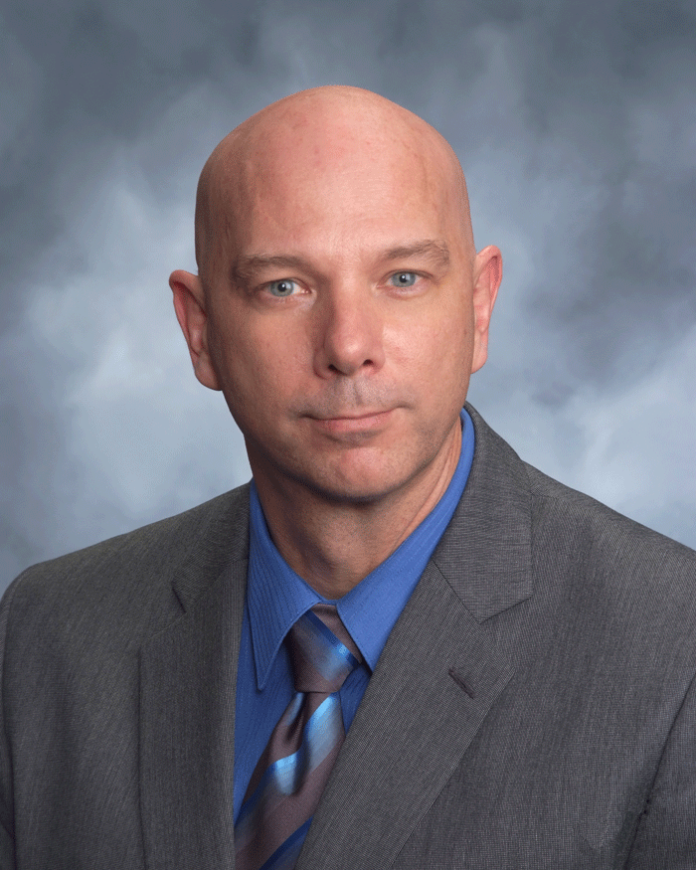When I arrived home recently to discover a large red-headed man in a Santa hat writing Grynch in my driveway with a charcoal briquette, I choked up a little bit because every year, my lifelong friend and childhood hero, Toby Dawn McIntyre, castigates me about canceling Christmas. It’s our sweet little Christmas tradition, and it always makes me a bit sentimental. The holidays just aren’t official until someone puts a lump of coal in my stocking about the whole Christmas versus Winter Break issue, so I am glad it was jolly old Toby Dawn. This mean superintendent’s heart grew two sizes just at the sight of his charcoal smudged face.
“Well, Mister Superintendent,” he sneered like the duly trademarked Grinch. “I won’t let you steal Christmas from these kids!” Other than Toby, I hadn’t heard much this year about school Christmas observances being controversial, but I suspect that’s because everyone’s focused on finding that cool new Omicron Transformer Robot to put under the tree. I hear they will be everywhere soon, but not necessarily in time for Christmas, which is clearly a supply-chain issue. Nevertheless, all this Winter Break stuff is very serious stuff to Mr. McIntyre, so I cannot blame him for being upset.
To be sure, Toby can spell Grinch correctly, but he has developed a fear of copyright infringement ever since a famous country singer shut down his Toby Dawn’s I Love This Bar BQ food truck. “The lawyers told me he could trademark Toby, if I didn’t settle,” he lamented. “They threatened to take away my name, Tommy Boy, my name! And you know I can’t stand to be called Tobias!” Clearly, Mr. Keith doesn’t play, and Toby did have an especially rough 4th grade after a substitute teacher accidentally used his full name. No one wants to experience that drama again.
The day before Christmas Break is my most favorite day of the year to visit schools, and for years I have invited Tobias to come sing Christmas carols, decorate Christmas trees, and to eat Christmas cookies at any of our numerous public-school Christmas parties. I think he would see parents and educators agreeing rationally regarding the difficult issues of ribbon candy and handmade ornaments at the kid-level. I wonder if Tobias Dawn McIntyre might be wearing his Cable News Goggles when looking at this issue, because no matter how often I tell him that schools can celebrate Christmas, he just won’t let up.
First, Christmas is a federal holiday, so kids are technically forced to wear ugly sweaters whether they like it or not. Banks close. Schools close. Even Toby Keith’s I Love This Bar and Grill is closed (yes, I checked), so no Okie comfort food on Christmas Day or pondering the ageless philosophical question, How do you like me now? I think everyone can agree that our kids deserve a few cookies and a chance to dance like Charlie Brown before facing another dismal Christmas Day without dinner at Toby Keith’s. So, schools can definitely recognize Christmas. They can even sing “Away in a Manger” during the classic stage version of Grandma Got Run Over by a Reindeer. Apparently, all of this is required by federal law. (Disclaimer, I am not a real doctor or a pretend attorney.)
But before this gets out of hand, let’s clear up this whole Winter Break versus Christmas Break issue. Calling it Christmas Break makes no sense because no one needs a break from Christmas, but everyone needs a break from winter, at least while global warming drags its feet. Seriously, nothing captures the true spirit of Winter Break better than keeping Tobias Dawn McIntyre fired up. So keep an eye out for Toby, but whatever you do, be sure to call him Tobias when you wish him a Merry Winter Break and Happy New Year!
Tom Deighan is superintendent of Duncan Public Schools. You may email him at deighantom@gmail.com and read past articles at www.mostlyeducational.com






